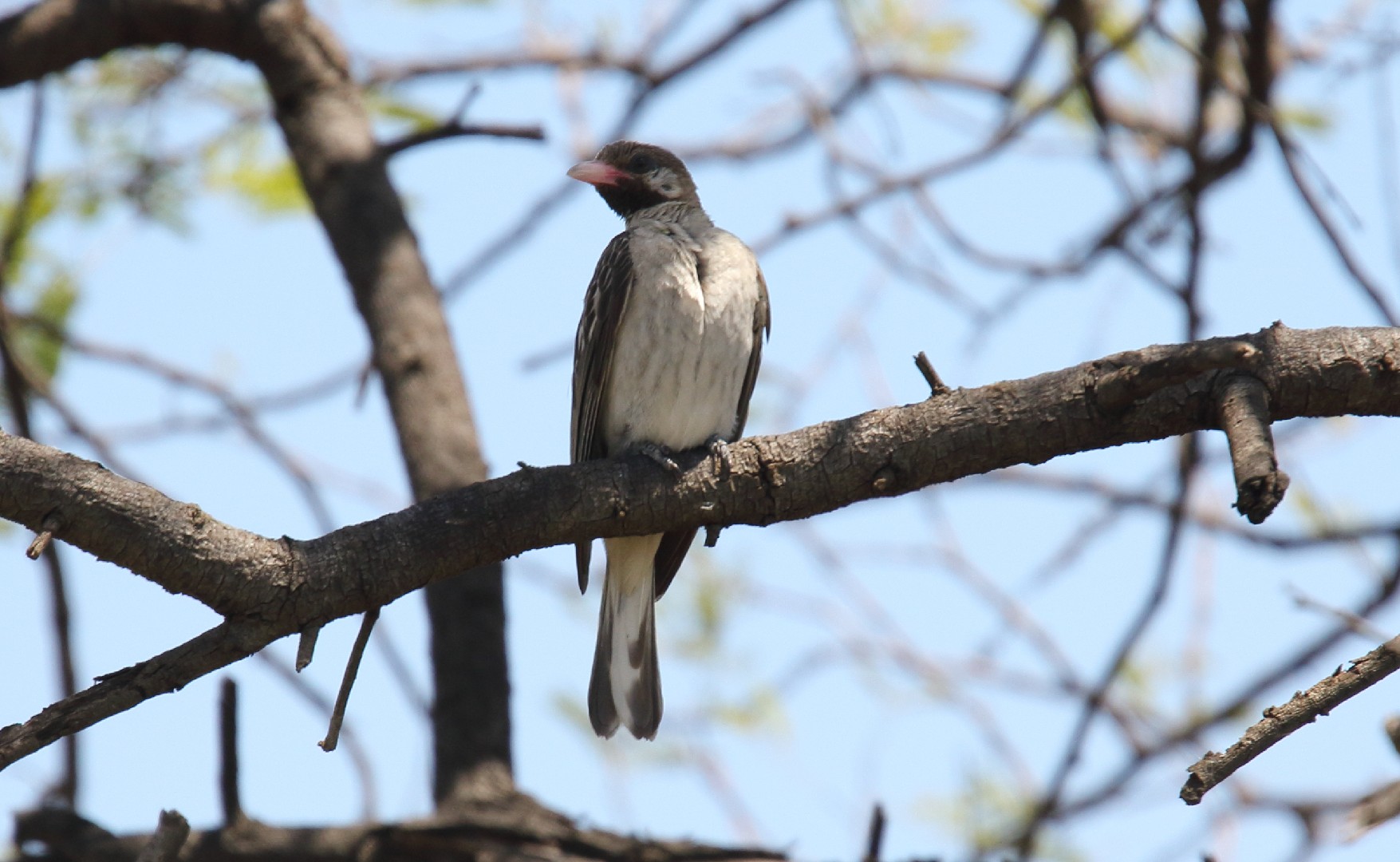Greater Honeyguide
A species of Typical Honeyguides Scientific name : Indicator indicator Genus : Typical Honeyguides
Greater Honeyguide, A species of Typical Honeyguides
Botanical name: Indicator indicator
Genus: Typical Honeyguides
Content
Description General Info
 Photo By Dominic Sherony , used under CC-BY-SA-2.0 /Cropped and compressed from original
Photo By Dominic Sherony , used under CC-BY-SA-2.0 /Cropped and compressed from original Description
The greater honeyguide is about 20 cm long and weighs about 50 g. Like all African honeyguides, it has bold white patches on the sides of the tail. The male has dark grey-brown upperparts and white underparts, with a black throat. The wings are streaked whitish, and there is a yellow shoulder patch. The bill is pink. The female is duller and lacks the black throat. Her bill is blackish. Immature birds are very distinctive, having olive-brown upperparts with a white rump and yellow throat and upper breast. 
Size
20 cm
Nest Placement
Cavity
Feeding Habits
Greater Honeyguide's primary diet includes beeswax, honey, and bee larvae. It uniquely guides humans to beehives, then feeds on the leftovers post-harvest. Greater Honeyguide also consumes flying insects, particularly termites, and at times, small bird eggs, displaying opportunistic foraging behavior.
Habitat
The habitat of greater Honeyguide encompasses a variety of wooded environments, including open woods, bushland, and streamside woodlands. Additionally, these birds are common in human-modified landscapes such as plantations, gardens with trees, and suburban areas with tree-lined streets. A notable aspect of their habitat is the frequent proximity to bees' nests, which are integral to their foraging behavior. These habitats are typically situated within broader geographical regions of sub-Saharan Africa.
Dite type
Insectivorous
General Info
Feeding Habits
Bird food type
Species Status
Not globally threatened.
Scientific Classification
Phylum
Chordates Class
Birds Family
Honeyguides Genus
Typical Honeyguides Species
Greater Honeyguide